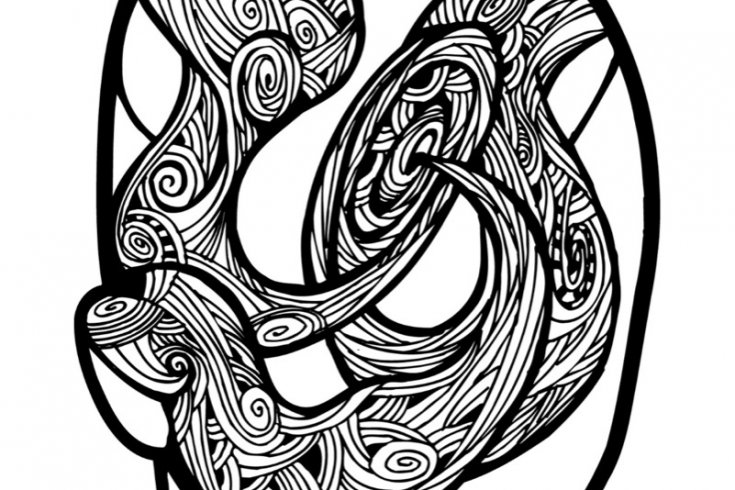
When asked about the murder, Larc first talks about his brother’s life rather than his death. As someone who also once lost a true friend and mentor, I understand the impulse to focus on the life of an incredible individual rather than reducing him to a victim of violence.
Larc’s big brother was shy and introverted. He often pushed Larc into the spotlight in social situations. He was a fine artist, especially skilled at designing clothes that communicated through images. He constantly pushed the boundaries and rules of his art form and stressed the importance of respect, and of striving to create art that defied conventions. If his intention was to instill a sense of individuality and vision in his little brother, these values were not lost on Larc. Although Larc’s initial interest in the arts was in large part inspired by a desire to follow in his brother’s footsteps, he soon became interested in film and media.
It was his eleventh grade media literacy class that led him to seriously appreciate and critique film. Larc was disturbed that he didn’t see people like himself—Africans, Basians, his boys from Rexdale—represented on the screen. And when he did see himself, many of the images were negative or slanted. He longed to see images of himself and his boys helping each other with jobs, homework, and family. He recalls his friend Deuce bringing together thirteen boys from the block and filling up three cars heading for Manitoulin Island. “It was so amazing,” he says. “The open spaces, the hiking, the sense of peace—all of it. My boy was so happy he actually did a cartwheel when he saw how incredible the lake and mountain peaks were.”
Larc is interested in seeing those simple human stories being told about all people. Though he was raised in an environment marked by basketball and hip-hop culture, he hung out with nerds in physics class and had plans to become a doctor. While spending many a night studying with an African friend who quickly ‘got’ the concepts, he realized that although he could do well in the courses he was taking, he was naturally very visual.
Larc’s entire life was one big storyboard after another. Each frame was different but a real and important part of his world. His memories of flying fish-scaling just above the Caribbean ocean during the years he spent in Barbados were vivid in his mind. So were the guys in black hoodies in front of his building and the giant turtles in the Humber River Trail. “Once, me and a friend lay down in an open field with sleeping deer and simply looked out into the sky for hours,” Larc says. “I am definitely a man of images.”
Those images and memories came to an abrupt end three years ago when his brother was murdered in front of their public housing building. In a tragic case of mistaken identity, gunmen who were spotted leaving the scene laughing shot Larc’s older brother at close range. Few witnesses came forward. One person later admitted to seeing Larc’s brother growing cold and lifeless on the concrete and continuing to drive past him into the underground parking lot.
If that wasn’t enough, Larc found himself disappointed by the media, which immediately wanted to link his brother to gang activity. “Most of what I said about my brother was never published,” Larc says. “I guess it wasn’t negative or sensational enough.”
Haunted by the reported laughter of the youth who shot his brother, Larc began to seriously consider the gaping hole that existed where conscience and empathy belonged. For a young person to commit such a crime, there had to be a significant lack of leadership in the community, systemic barriers, or problems related to ancestral connections and values.
Already an emerging filmmaker, Larc decided to use his art form to engage young people from similar communities. He started by designing and facilitating filmmaking workshops. He noticed that during visualization exercises where young students were asked to create storyboards to soothing music, 90 percent of the time the storyboards would depict driveby shootings or revenge plots. He found success when he flipped the script and started themed workshops on the environment, community pride, and other related issues.
Currently, Larc is completing a film on gun violence for the City of Toronto and plans to make a feature flick investigating the root causes internationally. He has also been granted a space in Parkdale by the City of Toronto for his arts education programs with youth. Most recently, he has had his film workshop for students approved by the Toronto District School Board. Last month he received his Artist Educator certificate from York University, thanks to a partnership program with the Ontario Arts Council. “I like the idea of using art to help kids discover themselves and their community,” Larc says. “I am hopefully planting some positive seeds… seeds that might grow into a respect for life and creativity.”



